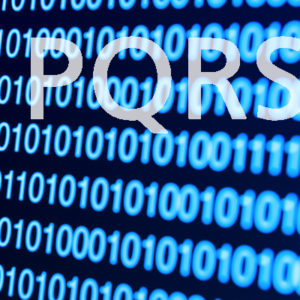The Physician Quality Reporting System (PQRS) is an important component of each neurosurgeon’s practice. Successful participation should be the objective of each practicing neurosurgeon in the U.S. This article briefly describes the PQRS program and summarizes the PQRS experience of the Mayfield Clinic. The Mayfield Clinic, founded in 1937, is a private neurosurgery practice located in Cincinnati that also serves as the department of neurosurgery at the University of Cincinnati.
PQRS has been in existence as a voluntary program since 2007. Previously called Physician Quality Reporting Initiative (PQRI), the purpose of the program was to give the federal government an idea of industry standards that could then lead to quality initiatives and payments based on those findings (i.e., pay for performance).
From 2007 to 2014, the program included a bonus or incentive payment for satisfactory participation. However, a payment adjustment or penalty was added to the program beginning in 2014 for any provider who failed to satisfactorily participate. For 2015 reporting, the penalty is two percent. This penalty will affect 2017 claim payments, as there is always a two-year lag between performance and penalty.
 Mayfield’s Reporting Process
Mayfield’s Reporting Process
Like many group practices, Mayfield has prided itself on keeping up with the latest government initiatives, including PQRS. The group’s reporting includes its neurosurgeons, neuroradiologists, an interventional radiologist and several physiatrists. In addition to the physicians, the practice also submits quality reporting for five nurse practitioners and three physician assistants. Mayfield has been involved with PQRS since the program began and has had a mostly successful track record of reporting.
The reporting process itself has changed over the years, from primarily claims reporting of individual measures, to including other options, such as qualified-registry reporting, qualified clinical data registry reporting (e.g., National Neurosurgery Quality and Outcomes Database [N²QOD]), group practice reporting (depending on size of practice), and direct EHR submission. Both the method of reporting and the measures reported are generally decided upon by the practice or individual provider. If your practice is in an Accountable Care Organization (ACO), you will not need to report. The ACO will report all the data aggregately.
As a surgical specialty practice, Mayfield has had difficulty identifying measures, measures groups and reporting methods that are efficient and meaningful to our practice. This is a common struggle with PQRS that is voiced by many specialty practices. Other challenges have included Medicare’s delay in providing feedback to participants on their success or failure with reporting. The feedback reports often arrive six months after submission, which is well into the next reporting period. It can be challenging to effect necessary change at that point.
Another somewhat unwelcome surprise occurred when some of our neuroradiologists, who we believed were exempt, were deemed to have failed satisfactory reporting in 2013, based on several Medicare patients that had carotid imaging performed at our imaging center. The neuroradiologists disagreed clinically with the quality action required to report the measure that PQRS determined should have been reported. Based on research, we determined that successful appeal was unlikely, and consequently the affected neuroradiologists will be recipients of a two- percent penalty on all Medicare payments in 2015.
Based on Mayfield’s size (approximately 33 reporting providers), we chose to report individual measures via claims for each year until 2014. In 2014, we switched to reporting the perioperative measures group via a qualified registry for the surgeons and individual measures via claims for the non-surgeons in our practice. The perioperative-measures group that we chose required reporting of four measures on 20 patients, only the majority of which must be Medicare Part B patients. This was significantly easier to achieve than 50 percent of eligible encounters for nine measures across three National Quality Strategy domains, which is the requirement when reporting individual measures. Detailed information on individual measures, measures groups, and domains is available on the CMS PQRS website.
 The 2015 Reporting Period
The 2015 Reporting Period
For the 2015 reporting period, due to the elimination of the perioperative measures group, Mayfield had to identify nine measures over three domains that we felt we could efficiently and accurately record for our specialty practice. For the surgeons, we are reporting, via claims, the three perioperative measures (numbers 21-23) for surgical cases and seven additional measures in office.
For our non-surgeons, we are only reporting seven measures, since we were unable to identify others that could be accurately and efficiently reported. Those providers will be subject to the Measure Applicability Validation (MAV) process. In this MAV process, the provider is analyzed, based on claims and practice, in order to determine whether other measures could have been reported. If additional measures are identified, the provider may be subject to the penalty.
Some of the measures we have chosen to report in office, such as vaccination status and advance-care planning, are not exactly pertinent to our neurosurgical practice, but are fairly easy to capture and incorporate into our clinical data entry process. As intended by the PQRS program, these measures also align nicely with some of the clinical quality measures (CQMs) being submitted for Meaningful Use. We are capturing data that is valuable for submission to both programs, even though the submission process is currently completely different for each.
While there have been challenges keeping up with PQRS, there have also been some significant successes. For all years that we have reported PQRS, the majority of our providers have earned the bonus. We also learned that working with a qualified registry was an effective means of reporting. For the 2014 reporting period, we engaged the services of PQRS Wizard, a qualified registry, to submit our perioperative measures group data. While we do not have the results yet, we found that data submission to the registry was easy, with the program having a similar feel to the tax software TurboTax. Data could be directly keyed into the PQRS Wizard website or uploaded in a compatible file format. As data was being submitted, the program analyzed the data, alerting the submitter to any keying or formatting errors. The registry then submitted the data to PQRS.
The Future of PQRS and Meaningful Use Programs
As we look to the future, participation in the neurosurgery qualified clinical data registry, N²QOD, will be considered, since participation would ease PQRS reporting burdens. Qualified clinical data registry reporting includes some participation costs and available staff to gather, check and submit the data. However, general feedback is that these registries are easy to use, and gather quality data that is more relevant and useful to specialty practices.
As PQRS continues to evolve and change, so must neurosurgery and the way our practices think about data submission and evaluation. Mayfield Clinic has continued to try to stay ahead of the game, as have many practices. But the struggle to find relevant clinical data to report on is significant. We look forward to the promised integration of the PQRS and Meaningful Use programs, so that relevant quality measures can be submitted once to satisfy both programs.
With the integration of these programs, we hope to see an expansion of the quality measures for neurosurgery and all specialties. In the interim, we will continue to evaluate the quality measures and reporting options each year to determine the best approach for our practice. We encourage other practices to do the same, since there is not a “one-size-fits-all” solution to satisfying PQRS reporting requirements. [aans_authors]








